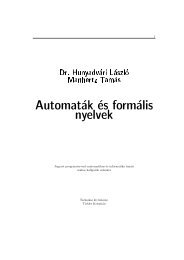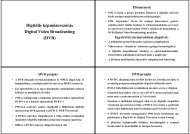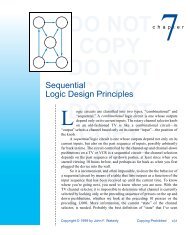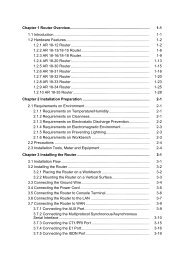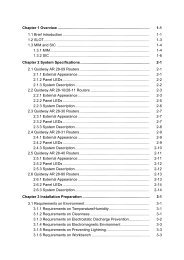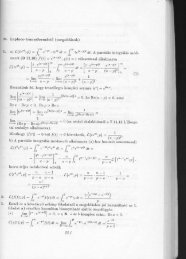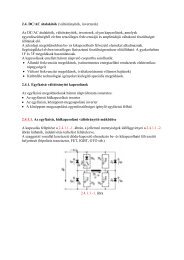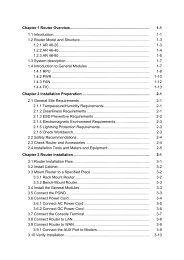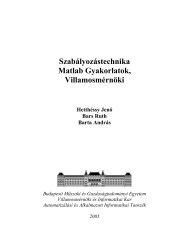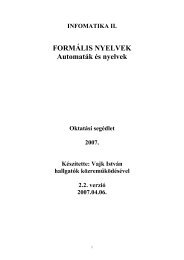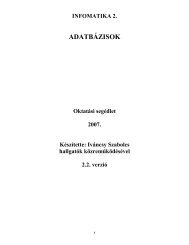chapter 8.pdf
chapter 8.pdf
chapter 8.pdf
Create successful ePaper yourself
Turn your PDF publications into a flip-book with our unique Google optimized e-Paper software.
606 Chapter 8 Sequential Logic Design PracticesDO NOT COPYCLOCK_LS0_LDOS1_LNOT COPYS2_LS3_LDO NOT COPYS4_LS5_LS6_LDO NOT COPYS7_LCOUNT 0 1 2 3 4 5 6 7 0 1 2DOFigureNOT8-43 Timing diagram for aCOPYmodulo-8 binary counter and decoder,showing decoding glitches.multiple signal paths in a decoder like the ’138 have different delays; for example,the path from B to Y1_L is faster than the path from A to Y1_L. Thus, even ifthe input changes simultaneously from 011 to 100, the decoder may behave as ifDO NOT COPYthe input were temporarily 001, and the Y1_L output may have a glitch. In thepresent example, it can be shown that the glitches can occur in any realization offunction hazard the binary decoder function; this problem is an example of a function hazard.In most applications, the decoder output signals portrayed in Figure 8-43DOwouldNOTbe used as control inputs to registers,COPYcounters, and other edge-triggereddevices (e.g., EN_L in a 74x377, LD_L in a 74x163, or ENP_L in a 74x169). Insuch a case, the decoding glitches in the figure are not a problem, since theyoccur after the clock tick. They are long gone before the next tick comes along,when the decoder outputs are sampled by other edge-triggered devices.DOHowever,NOTthe glitches would be a problemCOPYif they were applied to something likethe S_L or R_L inputs of an S-R latch. Likewise, using such potentially glitchysignals as clocks for edge-triggered devices is a definite no-no.If necessary, one way to “clean up” the glitches in Figure 8-43 is to connectthe ’138 outputs to another register that samples the stable decoded outputs onDOtheNOTnext clock tick, as shown in FigureCOPY8-44. Notice that the decoded outputshave been renamed to account for the 1-tick delay through the register. However,once you decide to pay for an 8-bit register, a less costly solution is to use an8-bit “ring counter,” which provides glitch-free decoded outputs directly, aswe’ll show in Section 8.5.6.Copyright © 1999 by John F. WakerlyCopying Prohibited



